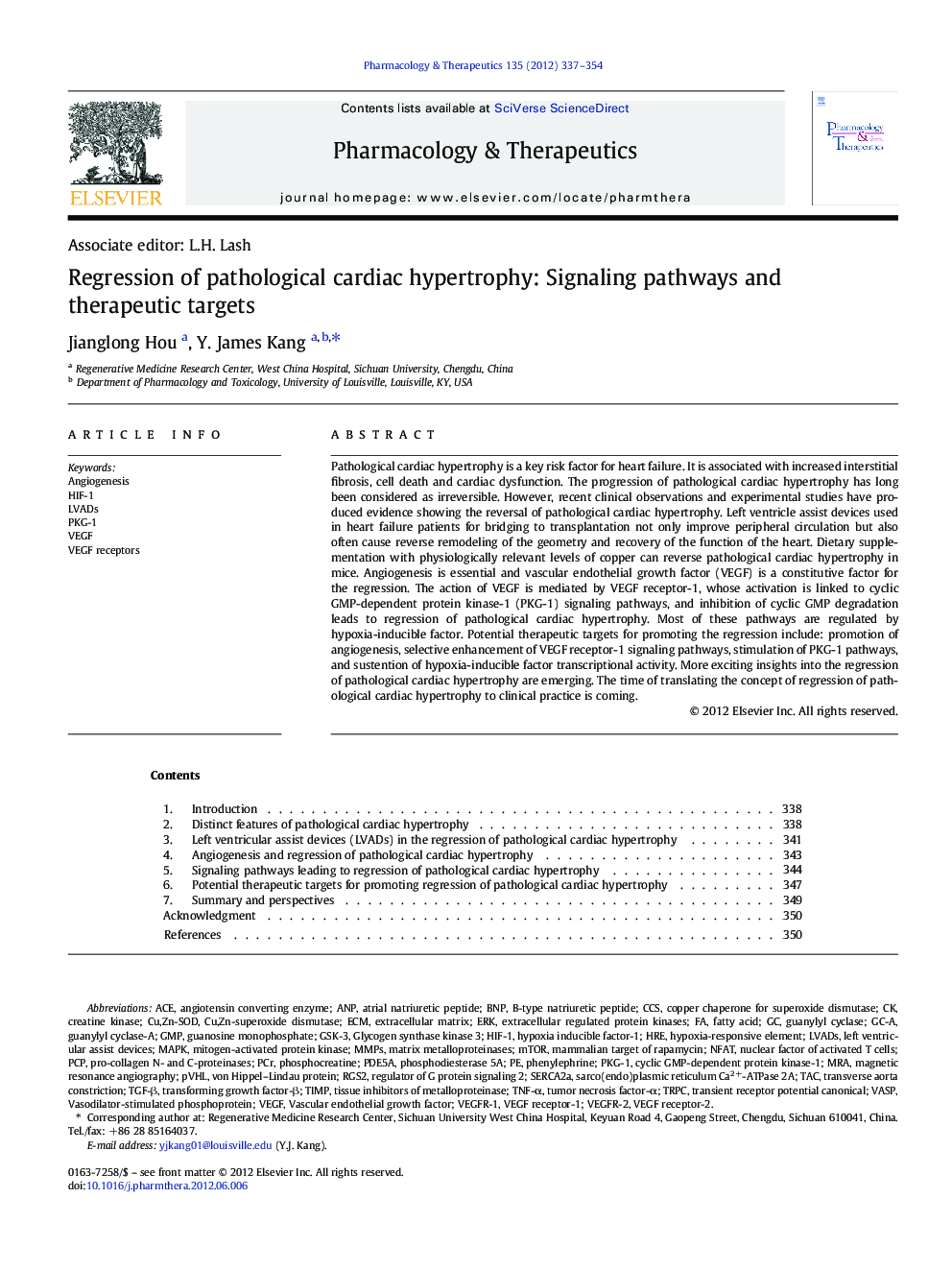| کد مقاله | کد نشریه | سال انتشار | مقاله انگلیسی | نسخه تمام متن |
|---|---|---|---|---|
| 2564061 | 1127593 | 2012 | 18 صفحه PDF | دانلود رایگان |

Pathological cardiac hypertrophy is a key risk factor for heart failure. It is associated with increased interstitial fibrosis, cell death and cardiac dysfunction. The progression of pathological cardiac hypertrophy has long been considered as irreversible. However, recent clinical observations and experimental studies have produced evidence showing the reversal of pathological cardiac hypertrophy. Left ventricle assist devices used in heart failure patients for bridging to transplantation not only improve peripheral circulation but also often cause reverse remodeling of the geometry and recovery of the function of the heart. Dietary supplementation with physiologically relevant levels of copper can reverse pathological cardiac hypertrophy in mice. Angiogenesis is essential and vascular endothelial growth factor (VEGF) is a constitutive factor for the regression. The action of VEGF is mediated by VEGF receptor-1, whose activation is linked to cyclic GMP-dependent protein kinase-1 (PKG-1) signaling pathways, and inhibition of cyclic GMP degradation leads to regression of pathological cardiac hypertrophy. Most of these pathways are regulated by hypoxia-inducible factor. Potential therapeutic targets for promoting the regression include: promotion of angiogenesis, selective enhancement of VEGF receptor-1 signaling pathways, stimulation of PKG-1 pathways, and sustention of hypoxia-inducible factor transcriptional activity. More exciting insights into the regression of pathological cardiac hypertrophy are emerging. The time of translating the concept of regression of pathological cardiac hypertrophy to clinical practice is coming.
Journal: Pharmacology & Therapeutics - Volume 135, Issue 3, September 2012, Pages 337–354